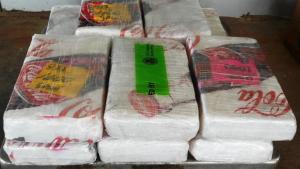The Trump administration rolled out its proposed Fiscal Year (FY) 2021 National Drug Control Budget Tuesday, and it's pretty much more of the same -- $35.7 billion more, to be precise. That's a proposed $94 million increase over what was actually allocated in the current fiscal year.

"The FY 2021 budget request sends a strong message that, although we've seen signs of real progress, the Trump administration will not let up in our efforts to save American lives," Office of National Drug Control Policy (ONDCP) Director Jim Carroll said in a statement accompanying the budget release. "Whether it is going after drug traffickers, getting people struggling with addiction the help they need, or stopping drug misuse before it starts, this budget request ensures our partners will have the resources needed to create safer and healthier communities across the nation."
But big talk notwithstanding, there's not really much of a bump for much-needed treatment. The budget would provide more than $14 billion to the Department of Health and Human Services for drug treatment funding, a 3% increase for the department and a 2.9% increase for treatment funding across the federal government. That includes $3.9 billion in drug treatment funding for the DEA for something outside its purview and for which it has not been previously funded.
There's another $2.135 billion for prevention, which we tend to think of mainly as educational efforts, but which the administration notes includes coercive and punitive "drug-free workplace programs" and "drug testing in various settings, including athletic activities, schools, and the workplace."
Ironically given ONDCP's role in rolling out the drug budget, the budget once again takes aim directly at ONDCP. Since the Bush administration, there have been efforts to eliminate or sideline ONDCP, and the Trump administration is back at it. This budget, if enacted, would slash the drug czar's office funding from the $261 million allocated this year to a measly $4.3 million next year, a whopping 98.4% reduction. Congress has so far always rejected such moves. The major part of that reduction results from the transfer of control over High Intensity Drug Trafficking Area (HIDTA) funds from ONDCP to the DEA.
And speaking of the DEA and the prohibition enforcement fraction of the overall drug budget, DEA would see its budget increase to $3.1 billion, an increase of 15.8% over this year. More than half of that increase, though, comes from the transfer of those HIDTA funds from ONDCP.
Overall, domestic drug law enforcement spending would increase to $9.95 billion dollars, a jump of 0.9% over this year. That would include $3.4 billion to pay for housing federal drug war prisoners, $931 million for the US Marshals Service to catch more drug war fugitives, and more than half a billion dollars for the Organized Crime Drug Enforcement Task Force program, among other line items.
There's also $3.4 billion for the Department of Homeland Security's Customs and Border Protection to "protect America's land, sea, and air borders from drug trafficking-related security threats." At the same time, though, the budget would reduce the Defense Department's drug interdiction activities -- think Coast Guard ships loaded with seized cocaine -- from $225 million to $109 million, a reduction of more than half.
But there's also international drug enforcement spending, and the Pentagon would get another $200 million for interdiction and counterdrug activities. That would be a dramatic 43% reduction from the $354 million appropriated this year.
The Justice Department, though, would see a 31% increase in its overseas spending, to just over half a billion dollars. The vast bulk of that funding -- $499.7 million -- would be destined for DEA overseas activities.
But the department with the biggest chunk of foreign drug war funding is State, which would see its Bureau of International Narcotics and Law Enforcement ("drugs and thugs") funded at $441 million, up 15% over this year. That includes things like trying to suppress the Afghan opium crop or the Colombian coca crop, tasks which have proven remarkably futile.
This is the Trump administration's drug war wish list. It is only a budget proposal and is unlikely to remain unchanged, and with keeping ONDCP active a long-running congressional priority, the radical reduction in its funding is one item that's likely to be amended. Still, the Congress has for years passed largely similar drug budgets, and this one will probably pass, too, without many substantial changes.
This work by StoptheDrugWar.org is licensed under Creative Commons Attribution-ShareAlike 4.0 International
Add new comment